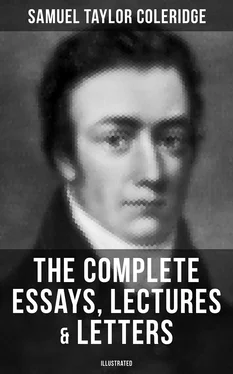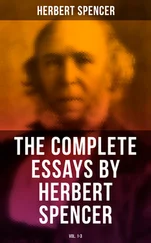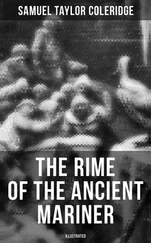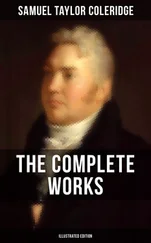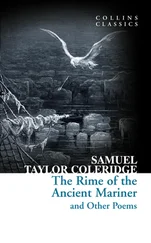The second passage is in the mouth of an old and experienced courtier, betrayed by the man in whom he had most trusted.
“And yet Sarolta, simple, inexperienced,
Could see him as he was, and often warned me.
Whence learned she this? — O she was innocent!
And to be innocent is Nature’s wisdom!
The fledge-dove knows the prowlers of the air,
Feared soon as seen, and flutters back to shelter.
And the young steed recoils upon his haunches,
The never-yet-seen adder’s hiss first heard.
O surer than suspicion’s hundred eyes
Is that fine sense, which to the pure in heart,
By mere oppugnancy of their own goodness,
Reveals the approach of evil.”
As therefore my character as a writer could not easily be more injured by an overt act than it was already in consequence of the report, I published a work, a large portion of which was professedly metaphysical. A long delay occurred between its first annunciation and its appearance; it was reviewed therefore by anticipation with a malignity, so avowedly and exclusively personal, as is, I believe, unprecedented even in the present contempt of all common humanity that disgraces and endangers the liberty of the press. After its appearance, the author of this lampoon undertook to review it in the Edinburgh Review; and under the single condition, that he should have written what he himself really thought, and have criticised the work as he would have done had its author been indifferent to him, I should have chosen that man myself, both from the vigour and the originality of his mind, and from his particular acuteness in speculative reasoning, before all others. — I remembered Catullus’s lines.
Desine de quoquam quicquam bene velle mereri,
Aut aliquem fieri posse putare pium.
Omnia sunt ingrata: nihil fecisse benigne est:
Immo, etiam taedet, taedet obestque magis;
Ut mihi, quem nemo gravius nec acerbius urget,
Quam modo qui me unum atque unicum amicum habuit.
But I can truly say, that the grief with which I read this rhapsody of predetermined insult, had the rhapsodist himself for its whole and sole object.
I refer to this review at present, in consequence of information having been given me, that the inuendo of my “potential infidelity,” grounded on one passage of my first Lay Sermon, has been received and propagated with a degree of credence, of which I can safely acquit the originator of the calumny. I give the sentences, as they stand in the sermon, premising only that I was speaking exclusively of miracles worked for the outward senses of men. “It was only to overthrow the usurpation exercised in and through the senses, that the senses were miraculously appealed to. REASON AND RELIGION ARE THEIR OWN EVIDENCE. The natural sun is in this respect a symbol of the spiritual. Ere he is fully arisen, and while his glories are still under veil, he calls up the breeze to chase away the usurping vapours of the night-season, and thus converts the air itself into the minister of its own purification: not surely in proof or elucidation of the light from heaven, but to prevent its interception.”
“Wherever, therefore, similar circumstances coexist with the same moral causes, the principles revealed, and the examples recorded, in the inspired writings, render miracles superfluous: and if we neglect to apply truths in expectation of wonders, or under pretext of the cessation of the latter, we tempt God, and merit the same reply which our Lord gave to the Pharisees on a like occasion.”
In the sermon and the notes both the historical truth and the necessity of the miracles are strongly and frequently asserted. “The testimony of books of history (that is, relatively to the signs and wonders, with which Christ came) is one of the strong and stately pillars of the church: but it is not the foundation!” Instead, therefore, of defending myself, which I could easily effect by a series of passages, expressing the same opinion, from the Fathers and the most eminent Protestant Divines, from the Reformation to the Revolution, I shall merely state what my belief is, concerning the true evidences of Christianity. 1. Its consistency with right Reason, I consider as the outer court of the temple — the common area, within which it stands. 2. The miracles, with and through which the Religion was first revealed and attested, I regard as the steps, the vestibule, and the portal of the temple. 3. The sense, the inward feeling, in the soul of each believer of its exceeding desirableness — the experience, that he needs something, joined with the strong foretokening, that the redemption and the graces propounded to us in Christ are what he needs — this I hold to be the true foundation of the spiritual edifice. With the strong a priori probability that flows in from 1 and 3 on the correspondent historical evidence of 2, no man can refuse or neglect to make the experiment without guilt. But, 4, it is the experience derived from a practical conformity to the conditions of the Gospel — it is the opening eye; the dawning light: the terrors and the promises of spiritual growth; the blessedness of loving God as God, the nascent sense of sin hated as sin, and of the incapability of attaining to either without Christ; it is the sorrow that still rises up from beneath and the consolation that meets it from above; the bosom treacheries of the principal in the warfare and the exceeding faithfulness and long-suffering of the uninteresting ally; — in a word, it is the actual trial of the faith in Christ, with its accompaniments and results, that must form the arched roof, and the faith itself is the completing keystone. In order to an efficient belief in Christianity, a man must have been a Christian, and this is the seeming argumentum in circulo, incident to all spiritual Truths, to every subject not presentable under the forms of Time and Space, as long as we attempt to master by the reflex acts of the Understanding what we can only know by the act of becoming. Do the will of my Father, and ye shall know whether I am of God. These four evidences I believe to have been and still to be, for the world, for the whole Church, all necessary, all equally necessary: but at present, and for the majority of Christians born in Christian countries, I believe the third and the fourth evidences to be the most operative, not as superseding but as involving a glad undoubting faith in the two former. Credidi, ideoque intellexi, appears to me the dictate equally of Philosophy and Religion, even as I believe Redemption to be the antecedent of Sanctification, and not its consequent. All spiritual predicates may be construed indifferently as modes of Action or as states of Being, Thus Holiness and Blessedness are the same idea, now seen in relation to act and now to existence. The ready belief which has been yielded to the slander of my “potential infidelity,” I attribute in part to the openness with which I have avowed my doubts, whether the heavy interdict, under which the name of Benedict Spinoza lies, is merited on the whole or to the whole extent. Be this as it may, I wish, however, that I could find in the books of philosophy, theoretical or moral, which are alone recommended to the present students of theology in our established schools, a few passages as thoroughly Pauline, as completely accordant with the doctrines of the Established Church, as the following sentences in the concluding page of Spinoza’s Ethics. Deinde quo mens hoc amore divino, seu beatitudine magis gaudet, eo plus intelligit, hoc est, eo majorem in affectus habet potentiam, et eo minus ab affectibus, qui mali sunt, patitur; atque adeo ex eo, quod mens hoc amore divino, seu beatitudine gaudet, potestatem habet libidines coercendi; et quia humana potentia ad coercendos affectus in solo intellectu consistit; ergo nemo beatitudine gaudet, quia affectus coercuit, sed contra potestas libidines coercendi ex ipsa beatitudine oritur.
Читать дальше
